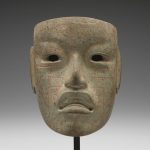Resources for Mary Sully: Native Modern
Exhibition page
Runs March 15, 2025 – September 21, 2025
Gallery 276
Talks at Mia
“Mary Sully: Native Modern” presented by Philip J. Deloria is Professor of History at Harvard University
March 16, 2025 at 2 PM
Tickets: https://new.artsmia.org/event/talk-mary-sully-native-modern
Videos
- “Mary Sully: A Reclamation,” Metropolitan Museum of Art, https://www.metmuseum.org/perspectives/mary-sully, Metropolitan Museum of Art, November 14, 2024
This is a great overview of Mary Sully–interview with her great nephew.
2. “Mary Sully and the Women’s Arts of the Great Plains,” YouTube, St. Louis Art Museum,
December 19, 2024. https://youtu.be/2Pt_1IZl4sU?feature=shared
The 2024 Donald Danforth Jr. Lecture on Native American Art was given by Philip J. Deloria, the Leverett Saltonstall Professor of History and the Chair of the Committee on Degrees in History & Literature at Harvard University
Newspaper Articles
Angeleti, Gabriella, “ The late Dakota artist Mary Sully in four key works at the Metropolitan Museum,” The Art Newspaper, August 24, 2025. https://www.theartnewspaper.com/2024/08/26/dakota-artist-mary-sully-exhibition-metropolitan-museum
Pochoda, Elizabeth, “The Unexpected Art of Mary Sully,” The Magazine Antiques, February 24, 2020 https://www.themagazineantiques.com/article/mary-sully-art/
Radsken, Jill, “A colorful figure,” The Harvard Gazette, July 11, 2019,
Pochoda, Elizabeth, “Mary Sully’s Astonishing Art Pictures American History through Indigenous Eyes,” The Nation, September 27, 2024. https://www.thenation.com/article/culture/mary-sully-native-american-artist-metropolitan/
Ahlberg-Yohe, Jill. “Mary Sully: Ahead of Her Time”. In Hearts of Our People. Exhibition catalogue. Organized by Mia, June 2019, p.103
Deloria, Phil. Becoming Mary Sully. Toward an American Indian Abstract. University of Washington Press, 2019.

